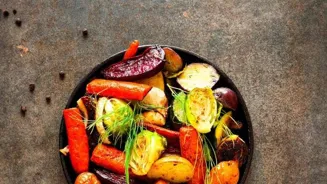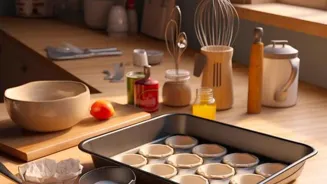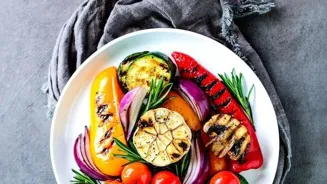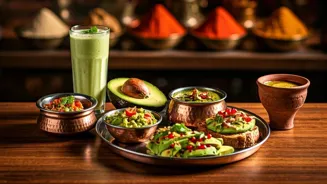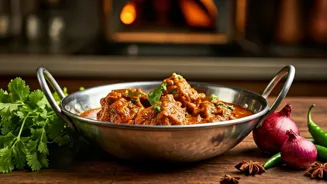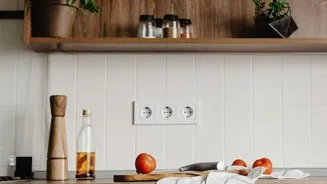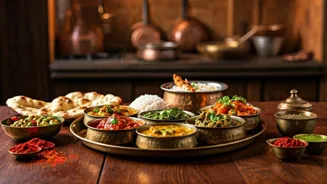Unleash your inner chef with these 7 essential cooking techniques! From sautéing to microwaving, master the basics now
In today's world, where ready-to-eat meals and food delivery apps are all the rage,
the art of cooking often takes a backseat. But, let's be honest, nothing beats the satisfaction of creating a delicious, home-cooked meal from scratch.
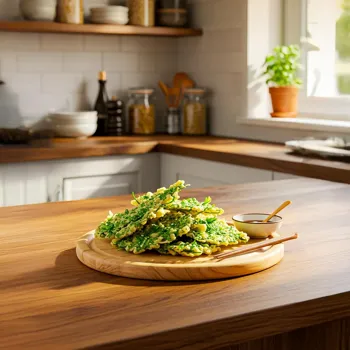
Not only is it kinder to your wallet, but it's also a massive boost to your overall well-being. So, ditch the takeout menus for a bit and let's rediscover the joy of cooking!
This article highlights seven basic cooking techniques that everyone, irrespective of age or experience, should learn like ABC. These techniques are the pillars of good cooking and will empower you to whip up amazing dishes with confidence, making you the star chef of your own kitchen!
Mastering the Art of Sautéing: Your Quick Culinary Friend
Sautéing is a quick and easy cooking method that involves cooking food in a small amount of fat over relatively high heat. It's your go-to technique for stir-fries, quick vegetable sides, and even starting off many curries.
To sauté like a pro, ensure your pan is hot before adding the oil and that the ingredients are cut into small, even pieces for uniform cooking. Don't overcrowd the pan, as this will lower the temperature and cause the food to steam instead of brown.
Keep the food moving constantly to prevent sticking and burning. Sautéing helps to retain the freshness and crispness of vegetables, sealing in their nutritious goodness.
A touch of garlic, ginger, or your favourite spices added during the sautéing process can elevate the flavour profile magnificently. This technique is very versatile; you can sauté pretty much anything, be it paneer, mushrooms, or leafy greens.
Remember, practice makes perfect, so don't be afraid to experiment and find your favourite sautéing combinations.
Boiling and Steaming: Gentle Giants of Healthy Cooking
Boiling and steaming are two of the simplest and healthiest cooking methods. Boiling involves cooking food in boiling water, while steaming uses the steam from boiling water to cook the food. Boiling is excellent for cooking root vegetables like potatoes and carrots, as well as pulses and pasta.
Steaming, on the other hand, is ideal for cooking delicate vegetables like broccoli and spinach, as it helps to retain their nutrients and colour. When boiling, make sure to add enough water to cover the food completely, and season the water with salt to enhance the flavour.
When steaming, use a steamer basket or a colander placed over a pot of boiling water, ensuring that the food doesn't touch the water. Both methods are incredibly easy and require minimal supervision, making them perfect for busy weeknights.
Boiled vegetables can be used in salads, soups, or mashed as a side dish. Steamed vegetables are delicious on their own or can be added to stir-fries and pasta dishes. Embrace these gentle cooking methods for light and nutritious meals.
Baking: More Than Just Cakes and Cookies
Baking isn't just about cakes and cookies, it's a versatile cooking method perfect for vegetables, casseroles, and even breads and pizzas. Baking involves cooking food in a dry oven using indirect heat.
It's a great way to bring out the natural sweetness of vegetables, creating a slightly caramelized flavour. Roasted vegetables like sweet potatoes, bell peppers, and onions are incredibly delicious and can be added to salads, sandwiches, or served as a side dish.
Casseroles are perfect for one-dish meals, combining vegetables, grains, and sauces for a hearty and satisfying dish. When baking, preheat your oven to the correct temperature and use the right baking dish for the recipe.
Keep an eye on the food to prevent burning, and use a toothpick or skewer to check for doneness. Baking might seem intimidating at first, but with a little practice, you'll be amazed at the delicious and diverse dishes you can create.
Braising: The Slow and Steady Route to Flavour
Braising is a slow cooking method that involves searing the food first, then simmering it in liquid for an extended period. While often associated with meat, it can be fantastic for hearty vegetable stews and dishes featuring tough vegetables like cabbage or root vegetables.
The initial searing caramelizes the surface of the ingredients, adding a depth of flavour, while the slow simmering tenderizes the vegetables and allows them to absorb the flavour of the braising liquid, which could be vegetable broth, tomato sauce, or even wine (for those who partake).
Braising is perfect for cooking vegetables in the winter months, creating warm and comforting meals. This method requires patience, but the payoff is a dish with incredible depth of flavour and tender, melt-in-your-mouth textures. Slow cooking is also often referred to as Dum in Indian dishes.
Deep Frying: Exercise Restraint and Caution
While not the healthiest option, deep frying is a technique that everyone should know how to do safely. It involves submerging food in hot oil until it's cooked through and golden brown. Think crispy pakoras, golden french fries, and crunchy spring rolls.
The key to successful deep frying is maintaining the correct oil temperature. If the oil is too cold, the food will absorb too much oil and become greasy. If the oil is too hot, the food will burn on the outside before it's cooked on the inside.
Use a thermometer to monitor the oil temperature and always fry in small batches to prevent the oil temperature from dropping too drastically. Allow the fried food to drain on a wire rack to remove excess oil.
Deep frying should be enjoyed in moderation, but knowing how to do it properly opens up a world of delicious possibilities.
Stir Frying: The Asian Way of Cooking
Stir-frying originated from Asia, and can turn out to be quite a healthy option of cooking where less oil is involved and more vegetables. The veggies are tossed in a wok and tossed in high heat, while the veggies retain its minerals.
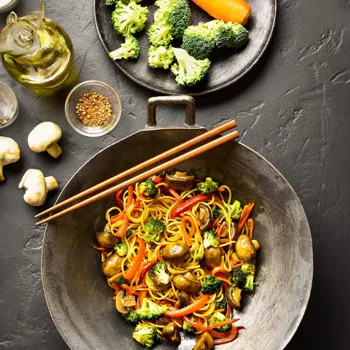
If you're doing the cooking right, the flavor of your dish will turn out to be delicious and you won't realize that you are eating something healthy.
Microwaving: For the Laziest Cooker
This process does not involve any special trick. You just need a oven and utensils that are friendly with the microwave. Put your food inside the oven for a specified of time, and food is ready to eat. You just need to know the right time to put in, so your food doesn't burn.

